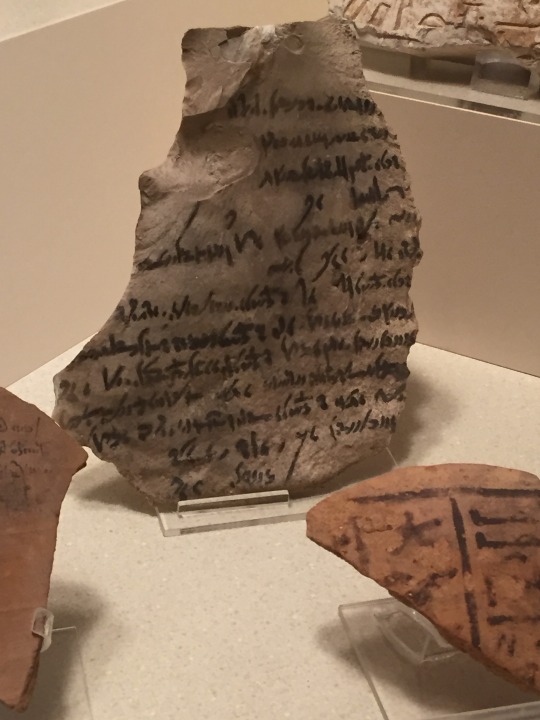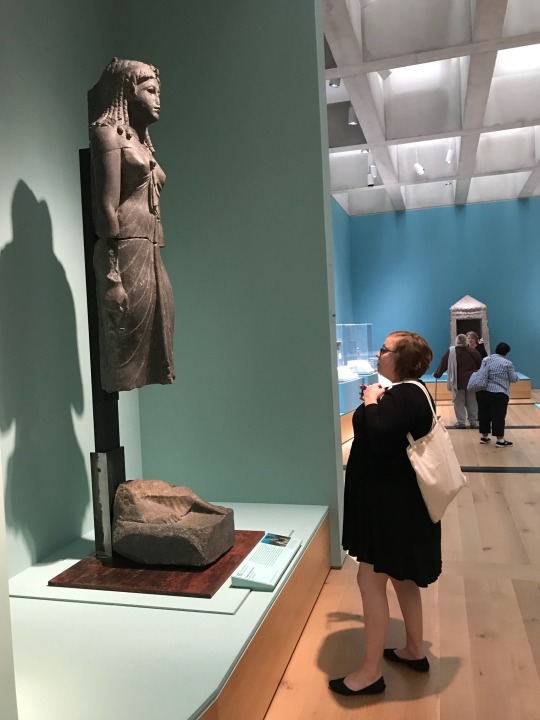With Valentine’s Day here, it’s hard to ignore all of the chocolate displays in stores and the sappy movies on TV – some might say that love had been commercialized for companies to make a quick buck. While they may be right about America in 2019, the same cannot be said about the ancient Egyptians. The Egyptians are credited with a lot. They built the pyramids, they mummified bodies and had giant elaborate tombs. One thing that people might not think about as often is how the Egyptians experienced love, marriage, and even infidelity and divorce.
Our first stop on the love train is the story of Isis and Osiris – two of the most famous gods of ancient Egypt.

As seen in this image from the Walton Hall of Ancient Egypt here at the Carnegie Museum of Natural History, Osiris is depicted as green-skinned, and he looks like a mummy! These are attributes unique to Osiris and they come from the story of himself and Isis. Osiris was reigning as king, and his brother Set was not too happy about it. So, he killed Osiris, tore his body into a bunch of pieces and strew them all over Egypt. In her mourning, Osiris’ wife Isis traveled far and wide to gather all of the pieces of her husband to eventually put them all back together and had a child with him. That child was Horus, who would then go on to avenge his father and kill his uncle. If that’s not love, then I don’t know what is.
Our second stop is on the topic of marriage in ancient Egypt. In American culture today, weddings are huge expensive parties that include entire families, huge cakes, and poufy dresses. This is not anything like marriages in ancient Egypt. Early marriages consisted of a woman entering a man’s house with whatever goods that they had agreed upon and the husband signing some paperwork. Often marriages were arranged, but there is evidence that importance was placed on a loving couple, like love poems and songs found at the workers village of Deir el-Medina. The people living in this area were usually tomb builders or painters, like Sennedjem, the owner of the tomb in Egypt on which our reconstruction is based.

Love poems from Deir el-Medina could be found on similar surfaces as those on display in Walton Hall, like these shards of stone and ostraca (shards of pottery). Sometimes shards like these were used like “scratch paper” and discarded, leaving them for archaeologists to find. According to Cameron Walker at National Geographic, these poems turned simple daily tasks such as catching fish into metaphors for their love.
Marriage was supposed to be everlasting for a good pair. If you were faithful to your spouse and a good spouse overall, you could find them waiting for you in the afterlife. If you were not good to them, you might not see them, or you might not even get to the afterlife at all. But, Egyptian society was quite sophisticated, if things didn’t work out in life, there were options for divorce. If either the husband or wife was dissatisfied, they could initiate a divorce, and the settlement was seemingly as simple as the marriage. Some paperwork was signed, and assets were divided upon agreements during the marriage. One important pillar of marriage was fidelity. If a spouse was found to be unfaithful to their partner it would be seen as grounds for a divorce.
Overall, the Egyptians placed emphasis on being faithful and being a loving spouse. But at least in the realm of the gods, there were cases of love that transcend our comprehension. Let’s be honest, who would really go all over and find pieces of their dead spouse…anyone? So, all in all the ancient Egyptians might seem to be a mysterious people but in the aspects of love and marriage they are really just like everyone else. We are all just people looking for love and, in the case where we can’t find it, cheap sweets to tide us over.
Anthony Kamler is a volunteer in the Section of Anthropology. Museum employees and volunteers are encouraged to blog about their unique experiences working at the museum!















